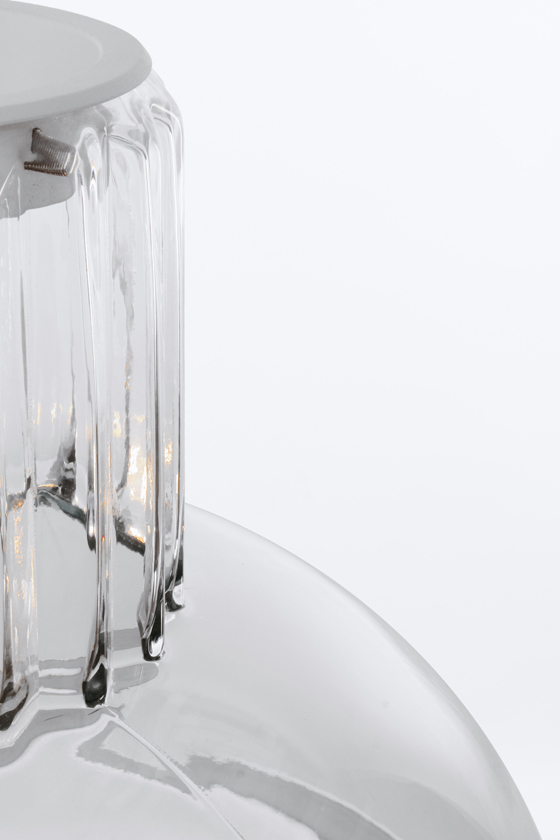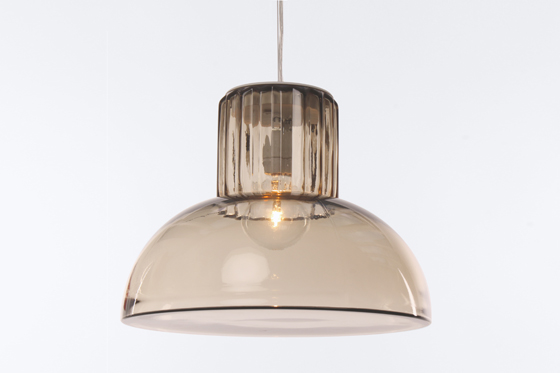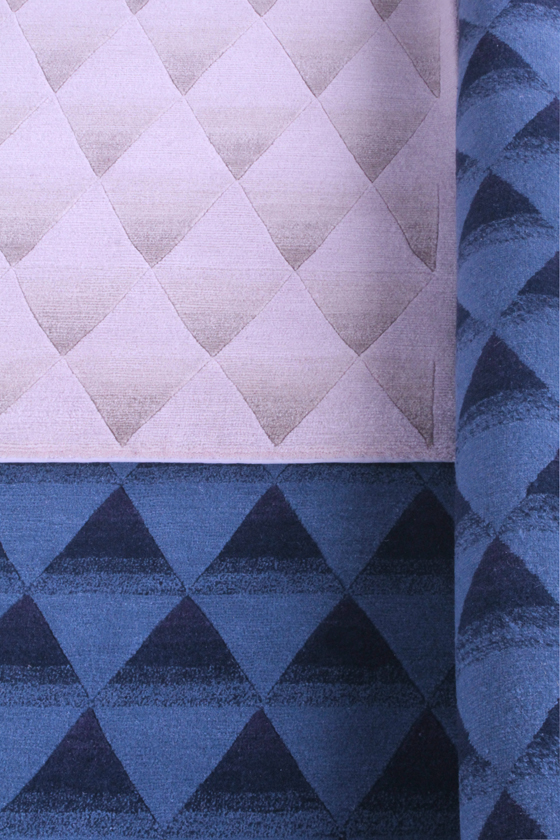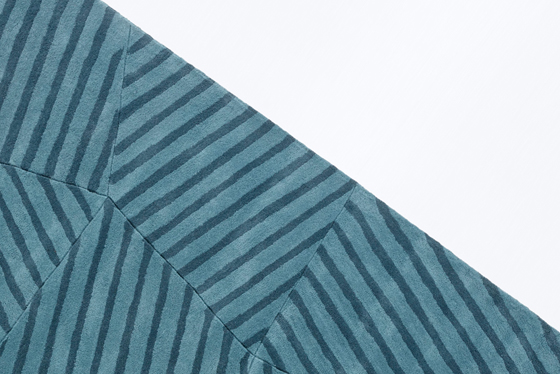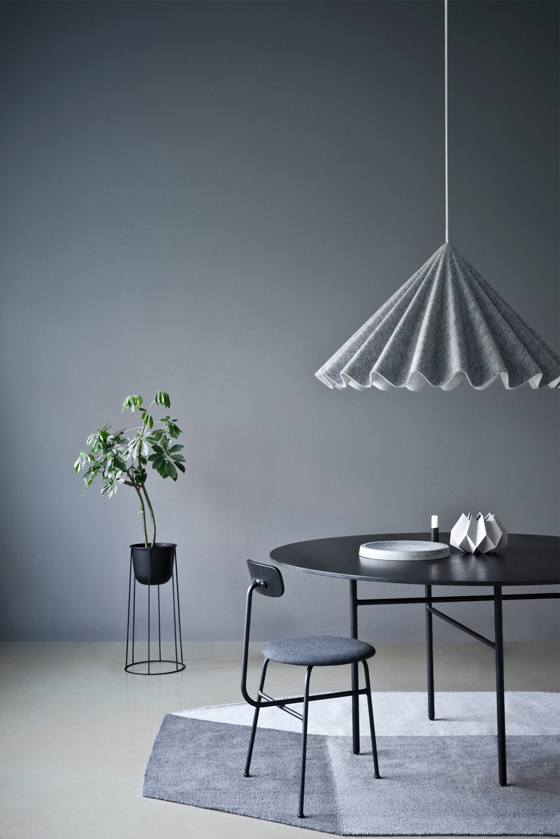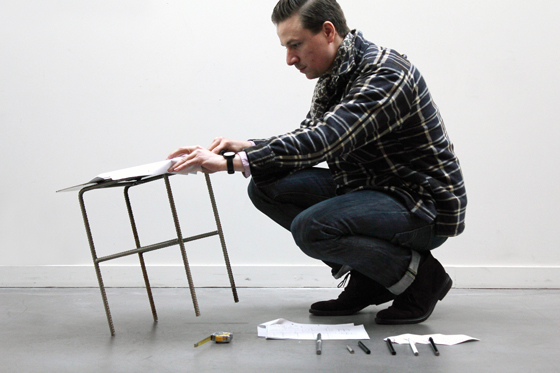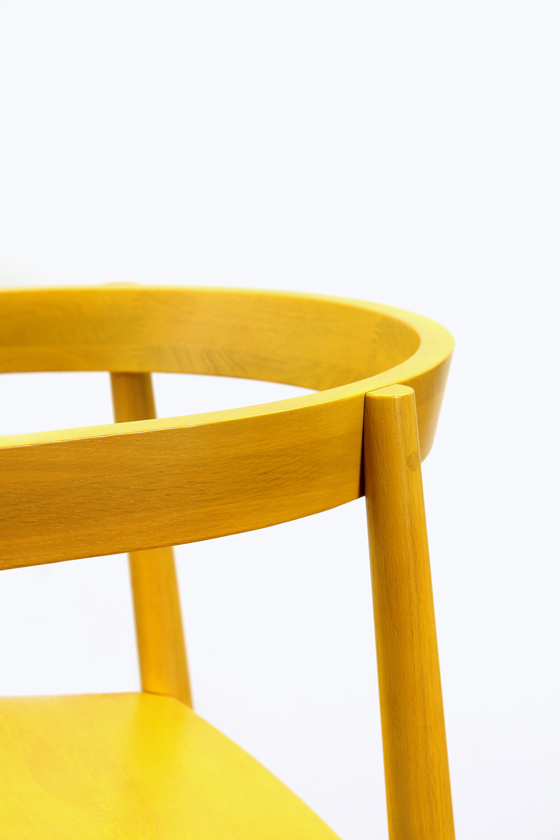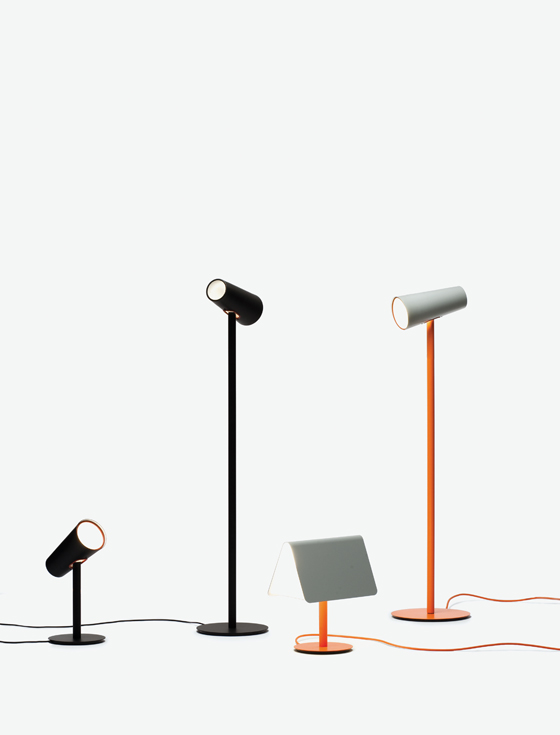The Right Stuff: Sylvain Willenz
Storia del Marchio di Simon Keane-Cowell
Zürich, Svizzera
25.06.15
His raft of enviable collaborations with the likes of Cappellini and Established & Sons, and, more recently, Retegui, Menu and Objekten, are testimony to the fact that Brussels-based designer Sylvain Willenz creates Things That People Actually Want.
....
Sylvain Willenz is a hard man to pin down.
I don’t mean in terms of getting in touch with him, you understand. The highly affable, award-winning designer can more often than not be found at his small but industrious office in his native city of Brussels – that’s if he’s not showing at an international design fair or has been invited to act as graduation juror at a renowned design school. It’s not a question of where, you see, but rather one of what.
If Belgium is a nation characterised by its multilingual, multicultural identity, then Willenz, who since graduating from London’s esteemed Royal College of Art a decade ago has become one of its leading creatives, is equally plural in terms of how he works and what he works on. Willenz is one of those designer’s designers. Never content with the status quo of things, his passion for giving form to products is inextricably bound up with a desire to experiment, underpinned by a genuine belief that it’s always possible to do things better.
Willenz has become the go-to designer for, among other brands, Menu (‘Standard’ suspension light), Retegui (‘Alaka’ marble shelving), and Objekten (‘Shadow’ mirrors)

Willenz has become the go-to designer for, among other brands, Menu (‘Standard’ suspension light), Retegui (‘Alaka’ marble shelving), and Objekten (‘Shadow’ mirrors)
×The diversity of his output testifies to this: a range of product types, from lighting and furniture to IT electronics and accessories, realised through an array of materials and processes. His objects are at turns architectural and graphic, poetic and utilitarian. And all of this via a raft of enviable partnerships with the likes of, among other brands, Cappellini, Hay, Karimoku New Standard and Established & Sons, the latter producing his game-changing 2008 ‘Torch’ suspension light, which has been specified the world over in hundreds of contract settings, as well as purchased for countless domestic spaces.
It’s the unknown that motivates Willenz. Not knowing at the start of a project how to do something, how it’s going to turn out. ‘It’s really a symbiosis [working with a client],’ he explains. ‘There has to be harmony, understanding and respect. The manufacturer has to trust the designer that we’ll find this thing, what we’re looking for. It requires discussion, dialogue, investigation into what we can do together.’
And trust is more than forthcoming. 2015 sees the Belgian build on his reputation as a designer of archly graphic textiles, sealed last year through collaborations with Chevalier Edition (with his new ‘Grades’ rugs), Febrik (with ‘Razzle Dazzle’, an entire textile collection), Ligne Roset (‘Fields’ rugs) and with Menu (‘Volume’ rugs). Visual and literal softness is explored in three dimensions, meanwhile, with Willenz’s upholstered ‘Moor’ chair, produced by Durlet, and his round-edged collection of marble shelves, mirrors and accessories for Retegui.
‘I’m always on the quest for simple yet powerful ideas,’ explains Belgian-born Sylvain Willenz. 'That's what drives me'
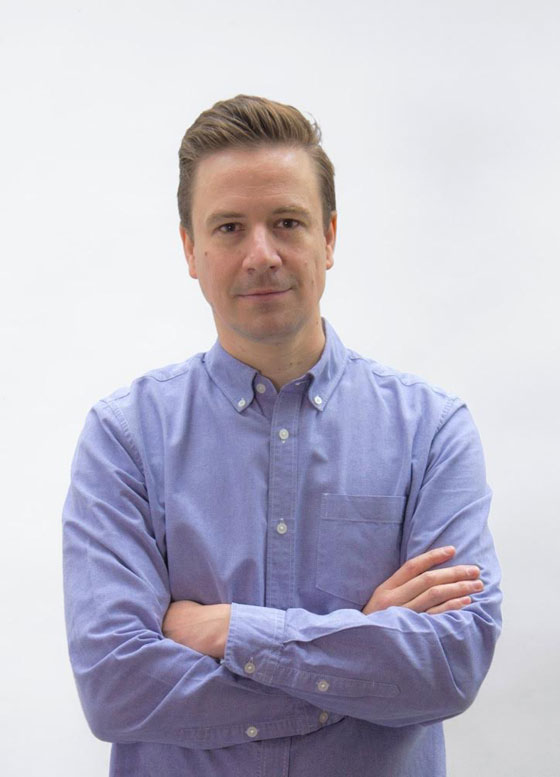
‘I’m always on the quest for simple yet powerful ideas,’ explains Belgian-born Sylvain Willenz. 'That's what drives me'
×And if that weren’t enough, he’s continuing to expand SWS, his online shop, which offers customers both serially produced and self-produced items, as well as limited-edition designs, providing an invaluable direct connection with the users of his products. ‘The particularity of SWS, is that it is a platform that gathers all designs by SYLVAIN WILLENZ DESIGN OFFICE. In other words, we are a design office, but we have also become our own retailer. People can purchase and check out our products direct and receive them a few days later. And we also provide a service for professionals. We facilitate the ordering process and deliver our products to many architects for their projects, whether small or large.’
Where there’s a Willenz, there’s a way.
....
Willenz’s iconic ‘Torch’ suspension light for Established & Sons, which, since its launch in 2008, has been specified for hundreds of contract projects internationally, as well as countless private ones
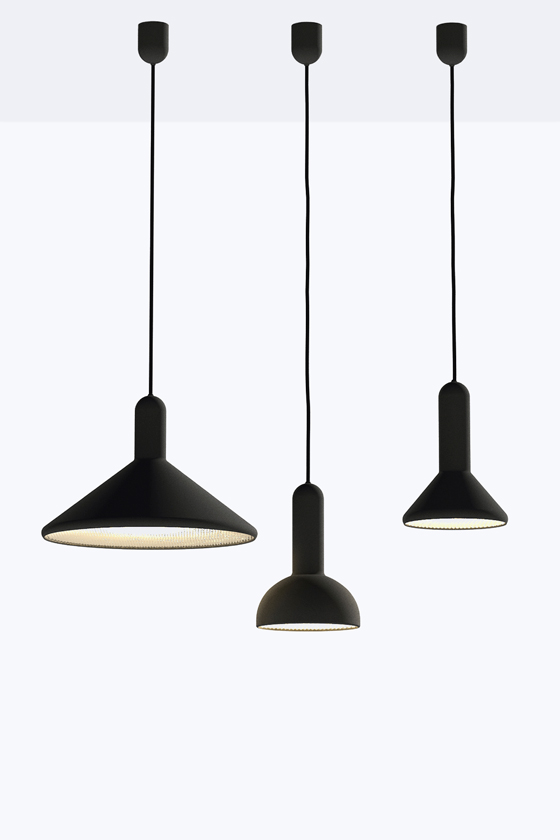
Willenz’s iconic ‘Torch’ suspension light for Established & Sons, which, since its launch in 2008, has been specified for hundreds of contract projects internationally, as well as countless private ones
×You have a strong, diverse body of work. What unites the way you approach your various projects?
There’s no one process, in the sense that we don’t have a recipe. Things occur out of the different opportunities that present themselves, the different clients that approach us. They all come from a different context or have a different set-up or target.
We really try to understand, however, who we’re dealing with and what they want. Sometimes the producer doesn’t know exactly what they want, just the direction in which they want to go or the type of product. It’s our job to look at what they have already and get a feel for the brand, and see how we can come up with something that corresponds to that spirit but which has our thread running through it. We prefer it, of course, when a client does know what they want. The collaboration is then a lot smoother and, from a business perspective, we’re able to set clear, achievable goals.
I always try to find something new that I haven’t done before. I’m interested in very simple, but not that obvious, shapes, elementary things. I’m also interested in texture. Basically in well-balanced, well-proportioned round features, which have a classicness to them, because I believe products should be appealing but also long-lasting and very durable. I’m not keen on things that scream, but rather ones that are clear, subtle and readable.
So how does your work relate to trends in design?
I don’t really like the word ‘trend’, although we are always looking at other creative fields as sources of inspiration. In the end, most things come from what I absorb when I’m out of the office. Fashion, clothing, accessories are very inspirational for me. In particular when they themselves are inspired by art. But they only inform our work. I ultimately have my own language.
Recent partnerships have seen Willenz secure his reputation as a designer of archly graphic textile products. Shown here, his ‘Grades’ rugs for Chevalier Edition and ‘Razzle Dazzle’ textile collection for Febrik…

Recent partnerships have seen Willenz secure his reputation as a designer of archly graphic textile products. Shown here, his ‘Grades’ rugs for Chevalier Edition and ‘Razzle Dazzle’ textile collection for Febrik…
×…along with his ‘Fields’ rugs for Ligne Roset and ‘Volume’ rugs for Menu
Has there been a progression in your work over the last ten years? In terms of aesthetics or how you think about design and its functions?
From a very general perspective, yes. Between 2003, when I graduated from the Royal College of Art, and 2008, when the first real product was launched onto the market – the Established & Sons ‘Torch’ light – this was a period when I took time to explore things. I was interested in self-production and experimentation. My first project, ‘Dr Bamboozle’, was seating made out of bamboo and rubber. There were also garlands lights, dipped in rubber. I think this whole approach of experimenting enabled me to understand making, materials and production. It helped me in understanding where I wanted to go.
And then came a much more refined, simple attitude towards products, which led more and more to the simplicity of ‘Torch’, which is now very representative of the design attitude I have towards my objects, my aesthetics, the ingenuity of the products and materials themselves. At some point a few years ago, I then decided I wanted to add a layer to all of this and expand into larger items. So we worked on a chair for Karimoku New Standard, the ‘Profile Chair’ for Stattmann Neue Moebel, and the ‘Candy’ tables and shelves for Cappellini.
This past year, we’ve been adding a further layer – developing our skills and expertise – by working on upholstery. We’re currently investigated sofas, club seating and upholstered chairs. Slightly chunkier stuff. I also have a personal interest in textiles. My partner Johanna inspires me a lot in this direction. She has a furniture background, but understands textiles.
In a way, my specialty is precisely not having a specialty. Except for knowing that I’m quite attracted to new things that I haven’t done before. For example, I’d never designed a hard-drive before. I’d never taken one apart or thought about it. But the opportunity came out of the blue so I grasped it. In the end, we developed about six external mobile hard-drives for Freecom and some other devices over the course of six years.
What about your development in business terms?
From a business perspective, there’s been a considerable change, of course. While I was much more into experimentation at the beginning, selling things myself, representing myself, everything moved to a new context where we were really designing actual products and collaborating with companies. And then, more recently, understanding where those products go, where they are specified, in part thanks to the opening of the online shop in 2012.
Where are your projects being specified?
My ‘Torch’ light has ended up in restaurants, retail spaces, as well as homes. It’s really gone to various places. We have the ‘Print’ lamp, too, that has gone to various places in the States and elsewhere. My ‘Profile’ chair can be found in cafes, as well as private homes.
You launched your online shop in 2012. What was the business motivation?
Very simple. We had a lot of people calling us from all over the world because they wanted to buy the products. So we thought it might be a good idea to offer the products straight from an online platform, to become our own retailer. The specificity of the shop would be that it only sells items by my office, by Sylvain Willenz. So, naturally, we called it SWS – SYLVAIN WILLENZ SHOP.
In it you’ll find branded and self-produced products. You can check out and buy a product directly and receive it a few days later, or order custom or exclusive products if that’s what you’re looking for. It’s also a great platform for professionals, regardless of the size of their project. They get a good overview of our signature products and appreciate the simple ordering process. Everything is very well laid-out and clearly explained.
We even created online tools for architects to download 3D-data and price-listing. It’s proven to be very efficient and the public, as well as professionals, have given us great feedback on the shop and our services.
‘Homerun Chair’ for Karimoku New Standard and ‘Landmarks’ for Established & Sons
How naturally commercially minded were you when you started out and how much have you had to learn?
I’ve had to learn pretty much everything. But it’s interesting to think about the purely business-related aspects of your work and how they inform your design work. We have products that sell less well, for example, and I know why. Because they weren’t envisaged properly in terms of their production or their materials, or in the end they’re too expensive or fragile. At college, nobody teaches you how to sell your stuff or the commercial aspects of design.
You’re very involved with design students, participating on graduation juries. Do you wish that design education had more of a commercial aspect to it in terms of teaching designers business skills?
Absolutely. I was on a jury last year at ECAL in Lausanne. Beautiful projects. One of my main questions to the students was ‘How much does it cost?’ How much does it cost to produce? What’s the business set-up? Are you selling on your own, on the internet? Are you going to propose it to somebody? What are the margins? How much does it cost to ship? I’m not being critical of the students, but not many of them had considered this fundamental aspect of design. Schools are well behind on this point. Yet they have a responsibility, especially today. They are forming these designers, releasing them into the real world. They Graduates need to have the fundamental tools of knowing what to sell and how to sell it.
Where is the studio heading? In which directions do you want to grow it?
Good question. I think the reality of design is changing ever more quickly these days. In the sense that stakes are very high. There are more and more designers out there for not that many producers. It’s definitely not what it was five years ago. Everybody is talking about the contract market these days, about selling volume. Perhaps it’s always been like this but even more so now.
Do you think there’s less risk-taking on all sides?
I do. As a designer, the gap you can fill, or the idea you can find, is getting smaller. The idea needs to be stronger.
Sylvain Willenz judging graduate work at ECAL, Lausanne. ‘Graduates need to have the fundamental tools of knowing what to sell and how to sell it.’
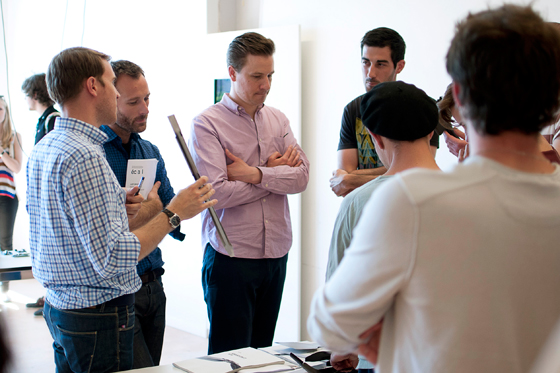
Sylvain Willenz judging graduate work at ECAL, Lausanne. ‘Graduates need to have the fundamental tools of knowing what to sell and how to sell it.’
×So on a very fundamental level, what motivates you to keep working? You clearly have a drive.
There is an absolute passion for and fascination with how things are made and getting things made. Collaborating with and contributing to a business, but being part of that business as well. It’s really a science, the whole equation of company + designer = what is the product and how can it be something that really makes a difference, that contributes to people’s lives, that feeds people. It’s amazing to design a product that a lot of people are going to be working with - like agents, distributors, manufacturers, right down to courier companies. But it’s also great when that thing becomes an icon or something that will remain. Not just something that is part of the system for a moment. Something durable, classic.
Long-selling products that avoid obsolescence. That have longevity.
Exactly. Good products, they have to take so many things into consideration, into the equation. It’s a very complex loop. That’s what drives me. I'm always on the quest for simple yet powerful ideas.
